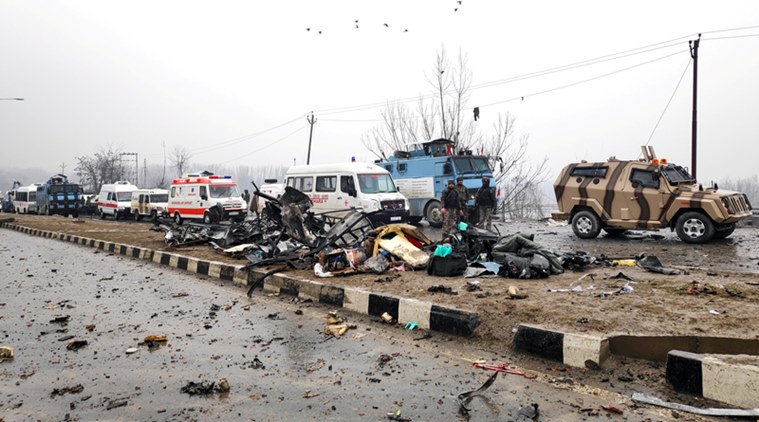
Among the first leads in the NIA probe into the Pulwama attack is a red Maruti Eeco car which eye-witnesses have told investigators was seen speeding alongside the CRPF convoy near Lethpora on the Jammu-Srinagar highway.
Investigators are now trying the trace the car, which was used by a suicide bomber to target the convoy Thursday, and its owner. Sources said that the NIA has also recovered a portion of the bumper and the axel that were both likely parts of the red car. This has established that the car used in the attack was of a Maruti-make and not a Scorpio as believed earlier.
Sources said that they have statements on the red car from CRPF personnel, who have said that they saw it speeding alongside the convoy on the highway near Latoomode in Lethpura. “It kept driving along the convoy for a couple of minutes. The driver was even asked to keep his vehicle away as he was getting too close to the convoy. But moments later he crashed into a bus and detonated the IED,” said an officer.
On Saturday, CRPF Director General Rajeev Rai Bhatnagar also visited the explosion site. Police sources said they were focussing on two Jaish-e-Mohammad modules operating in South Kashmir.
Watch Video
Incidentally, sources said that days before the attack at Pulwama, the J&K Police had generated three inputs about a possible attack by militants but none were specific.
Police sources said that one of the inputs generated and shared with security agencies warned of an attack by Jaish-e-Mohammad militants somewhere between “Awantipora and Srinagar”. The attack on Thursday took place at Lethpora, a village on the Awantipora-Srinagar stretch.
In another input, police had warned that militants may try to explode a powerful IED. “There were reports that militants are planning a powerful IED blast and that they have assembled two such IEDs…but again the input was not specific,” said an officer.
Police sources said that it had also generated another input on a possible IED blast, which was shared with different agencies on February 8. Security forces were then asked to “sanitise the area” before deployment.